The biggest entertainment stories
Get our big stories about Hollywood, film, television, music, arts, culture and more right in your inbox as soon as they publish.
You may occasionally receive promotional content from the Los Angeles Times.
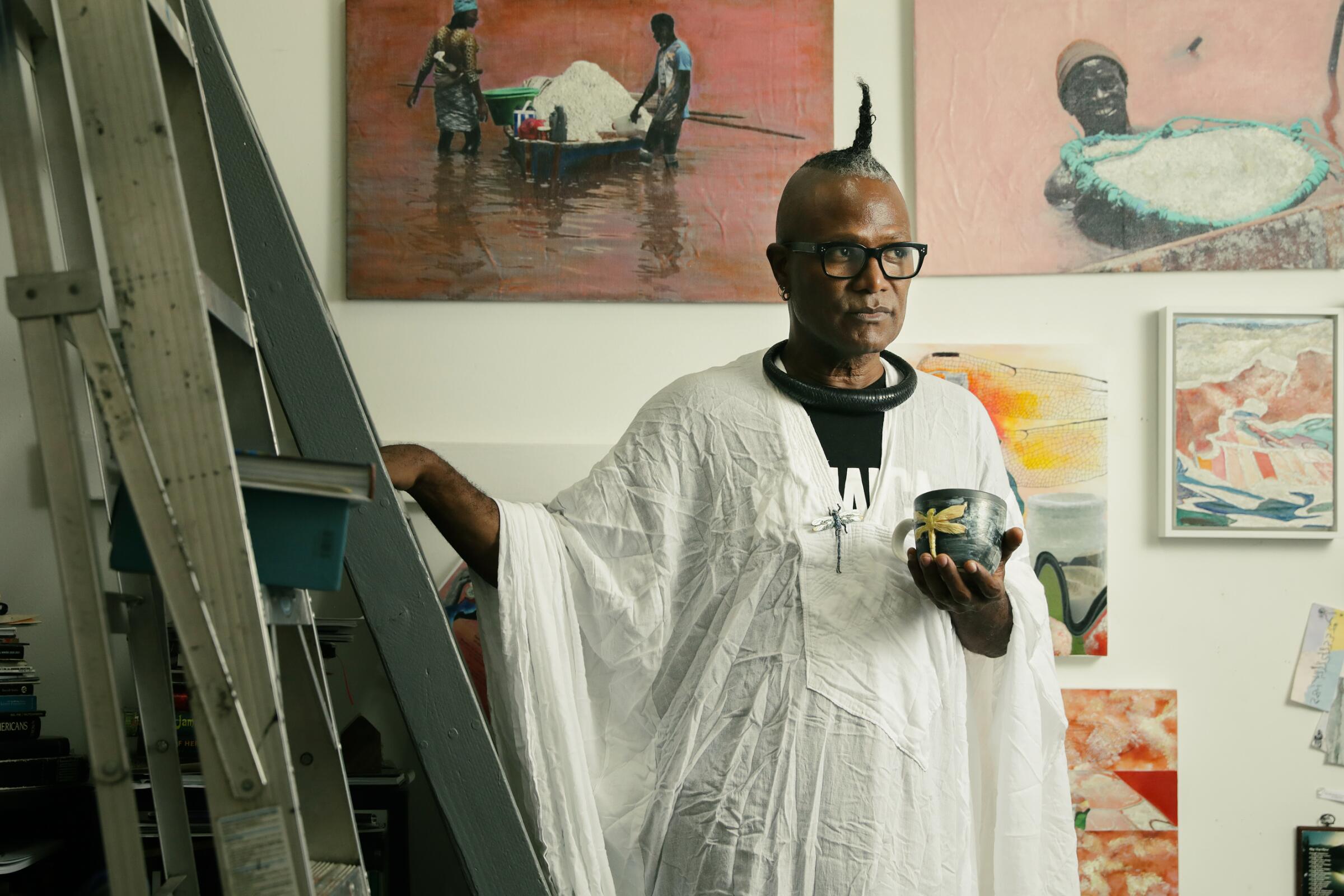
The pandemic completely reshaped our relationships with food, in ways both minuscule and monumental. As mandatory lockdowns swept the nation in early 2020, grocery store lines snaked around the block. Many shoppers adopted “essentials only” mindsets, eschewing guilty pleasures. Restaurants slashed menus in half or shuttered completely. Some hunker-downers began cooking at home for the first time, while others sanitized their contact-free deliveries before carrying them inside. Big family feasts were postponed indefinitely.
For low-income individuals and those living in underserved communities, access to food reached crisis levels. A report conducted by USC found that approximately 1.2 million households in L.A. County experienced food insecurity — defined as “a disruption in regular eating because of money or other limited resources” — between April and December of 2020. The report also found that one in four low-income households remained food insecure in 2021.
Using food as a focal point, the new exhibition “At the Table” assembles a collection of L.A.-area artists to explore the ways the pandemic forced us all to reassess our priorities, adapt and make do.
The group exhibition, which opened at Armory Center for the Arts in Pasadena on July 29, includes works that are inspired by and, in some cases, made with food items. There are pieces that celebrate food-based cultural traditions. Some take a hard look at the ways citizens and natural resources have been exploited for the sake of food production. Others highlight artist-led community efforts to provide food and essentials to those in need across L.A. Gallerygoers can take part in interactive workshops that encourage personal reflection, as well as social connection. Visitors can also donate shelf-stable foods to an on-site free community pantry.
In the run-up to the opening, we spoke with four of the participating artists to discuss the ways they incorporated food materials and food-based issues into their submissions.
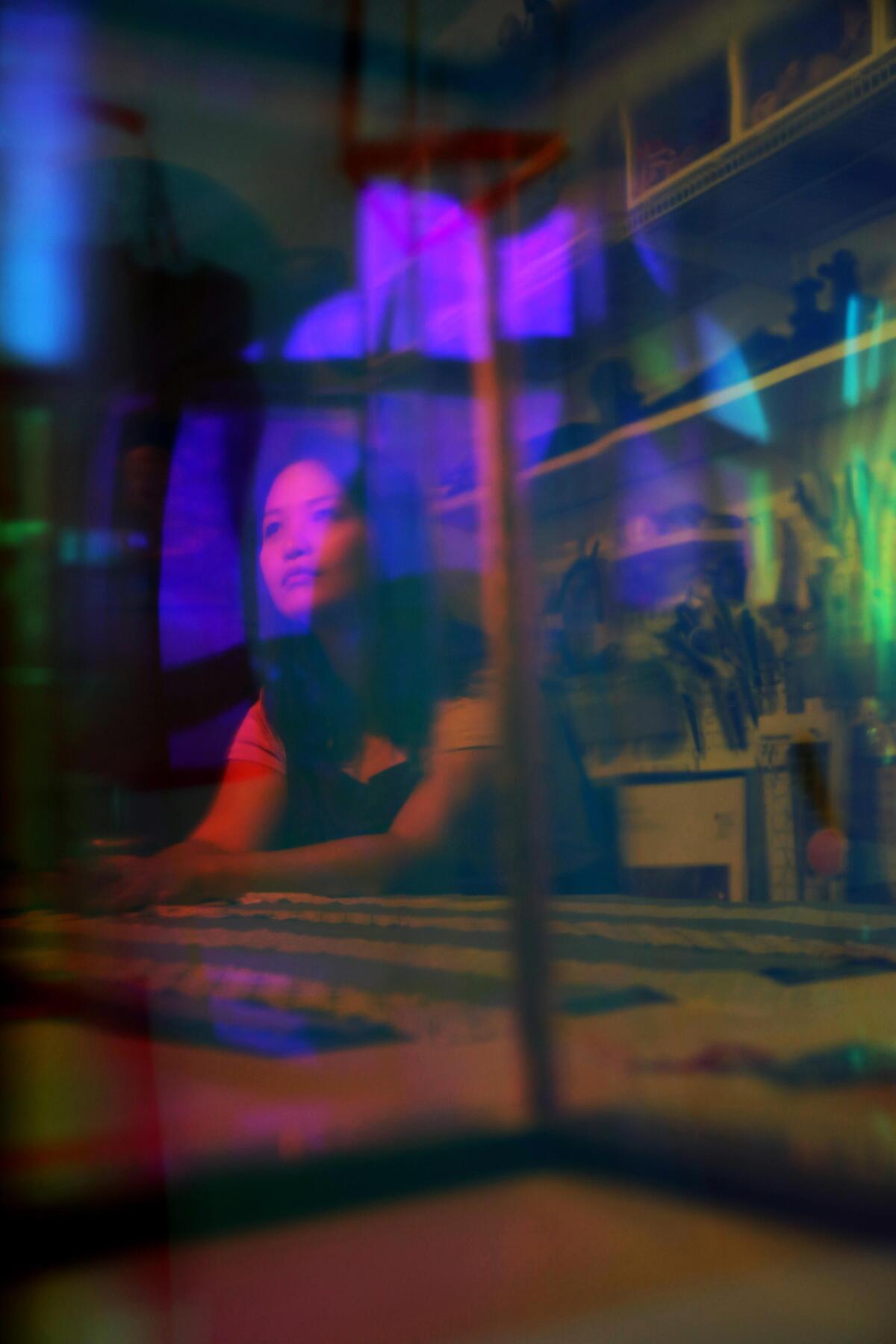
For Alhambra-based artist Yeu “Q” Nguyen, food is the key to unlocking memories and emotions. Childhood moments spent helping your grandmother in the kitchen, the sublime smell of your favorite dish, the last meal you shared with family before lockdown — she wants to tap into all of those sensations and feelings. Her “Sweet, Sweat and Love,” a set of usable dispensers filled with dessert-scented hand sanitizers, floods the senses with sweetness while acknowledging our bittersweet new normal. With an array of textile-based pieces depicting noodles, peanuts and fish heads, she harks back to her Vietnamese upbringing and, at the same time, tackles social issues that may feel familiar to a wide variety of stateside immigrants and refugees.
Nguyen will conduct in-person workshops wherein visitors create fabric dumplings, stuff them with written accounts of their feelings and contribute them to her interactive sculptural work titled “Emotional Dumplings.”
“It’s about everybody coming together and giving a little piece of themselves,” she said. “I hope that folks can come do this interactive thing and discover how my ritual makes them feel. Then, they can develop their own ritual for processing emotions and sharing them with others.”
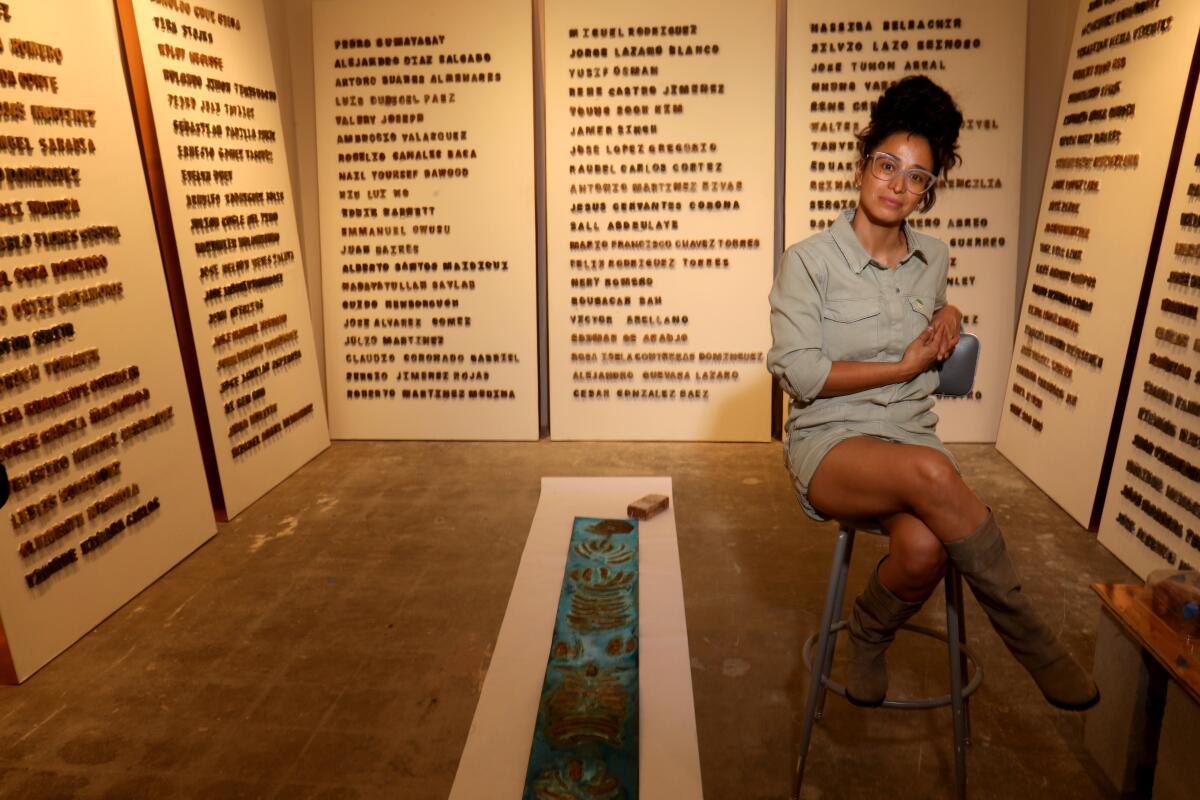
Jackie Amézquita was drawn to corn masa as a medium for both its practicality as a binding agent and for its deep connection with her heritage. “Corn is a fundamental nourishing ingredient in Latin American culture,” she said. “I was raised in Guatemala, and I remember going with my grandma to the mill to grind corn. Mixing it with soil was my way of playing because we didn’t have toys like kids have here.”
In 2020, she revived that youthful pastime to create “Proclamación,” an ongoing interactive series that considers how food can provide a sense of place. She created slabs made from masa, hydrated lime and soil that she collected from 36 L.A. neighborhoods. Then, she hosted gatherings across the city and encouraged attendees to eat various dishes using the slabs in place of plates. The results offer a unique take on topography — when hung side by side, the food-splattered slabs create a map, of sorts, charting the city’s diverse foodways.
“What sparked these pieces is that sense of home and belonging,” Amézquita said. “I started to consider how food provides immigrants with both nourishment and a sense of identity. In L.A. there’s a cross-cultural connection with all these different dishes. Meaningful interactions can happen on a personal level, and food is an invitation for us to have those conversations.”
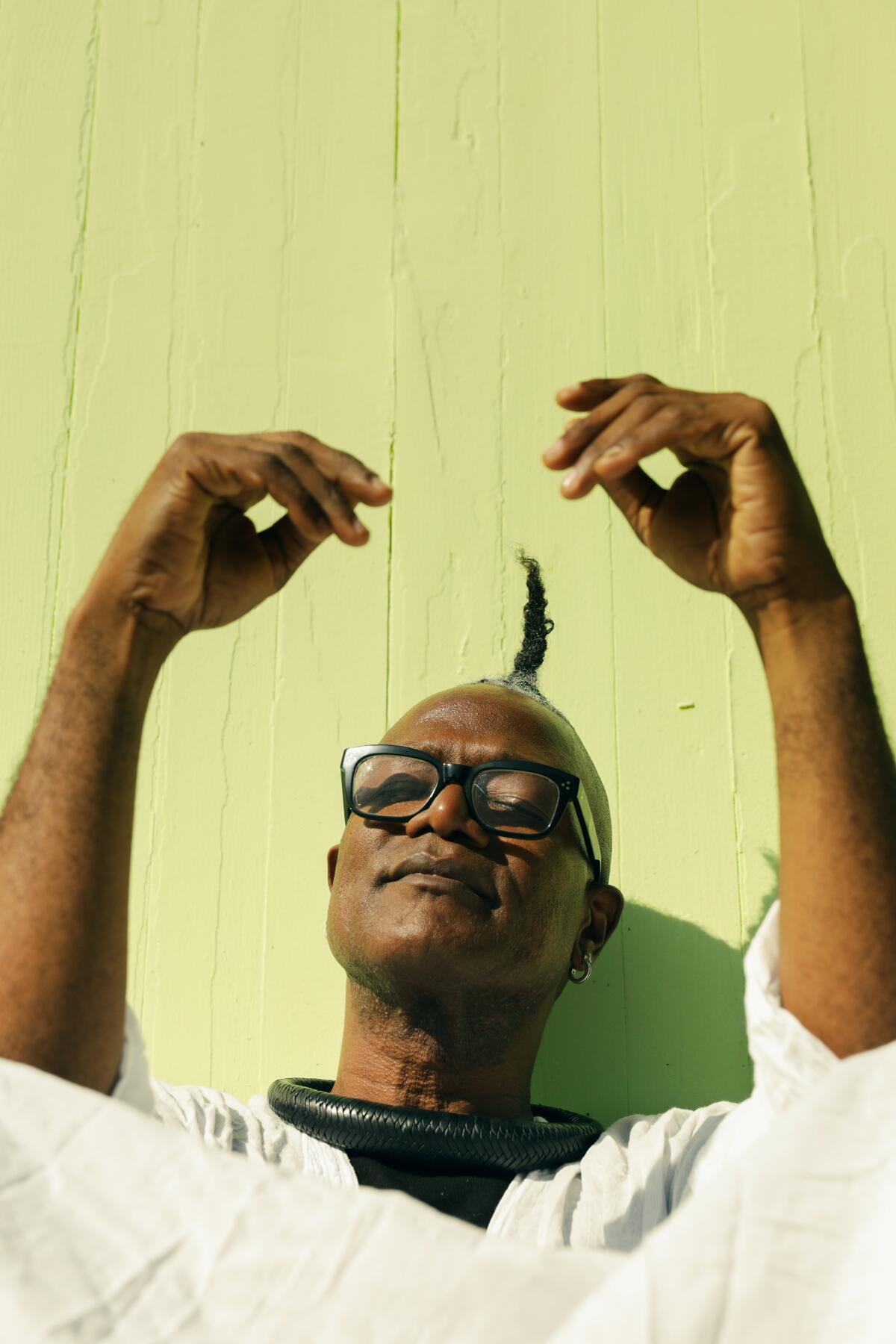
Yrneh Gabon’s “Fire and Salt” series examines the impact of salt beyond its ability to add flavor to a dish. The series was inspired by a 2017 visit to Dakar, Senegal, during which the Jamaican-born artist observed the famed pink waters of Lake Retba, a massive salt-mining site. “I witnessed the labor-intensive environment in which people were working,” he recalled. “The labor makes you weep. You see people harvest this salt for eight or nine hours.”
Back in his Santa Monica base, Gabon began researching the history and politics surrounding the global salt trade and traced the effects that salt mining has on the environment. He also explored health-related issues tied to salt consumption, paying particular attention to how those issues affect underserved Black communities in the U.S.
The mixed-media works on display in the exhibition incorporate actual salt crystals, which change and grow over time. The pieces also prominently feature pairs of clasped hands, in homage to those West African miners. “The hands, for me, are about the people that you don’t see,” he said. “You see their labor, but you never see their faces or know their names.”
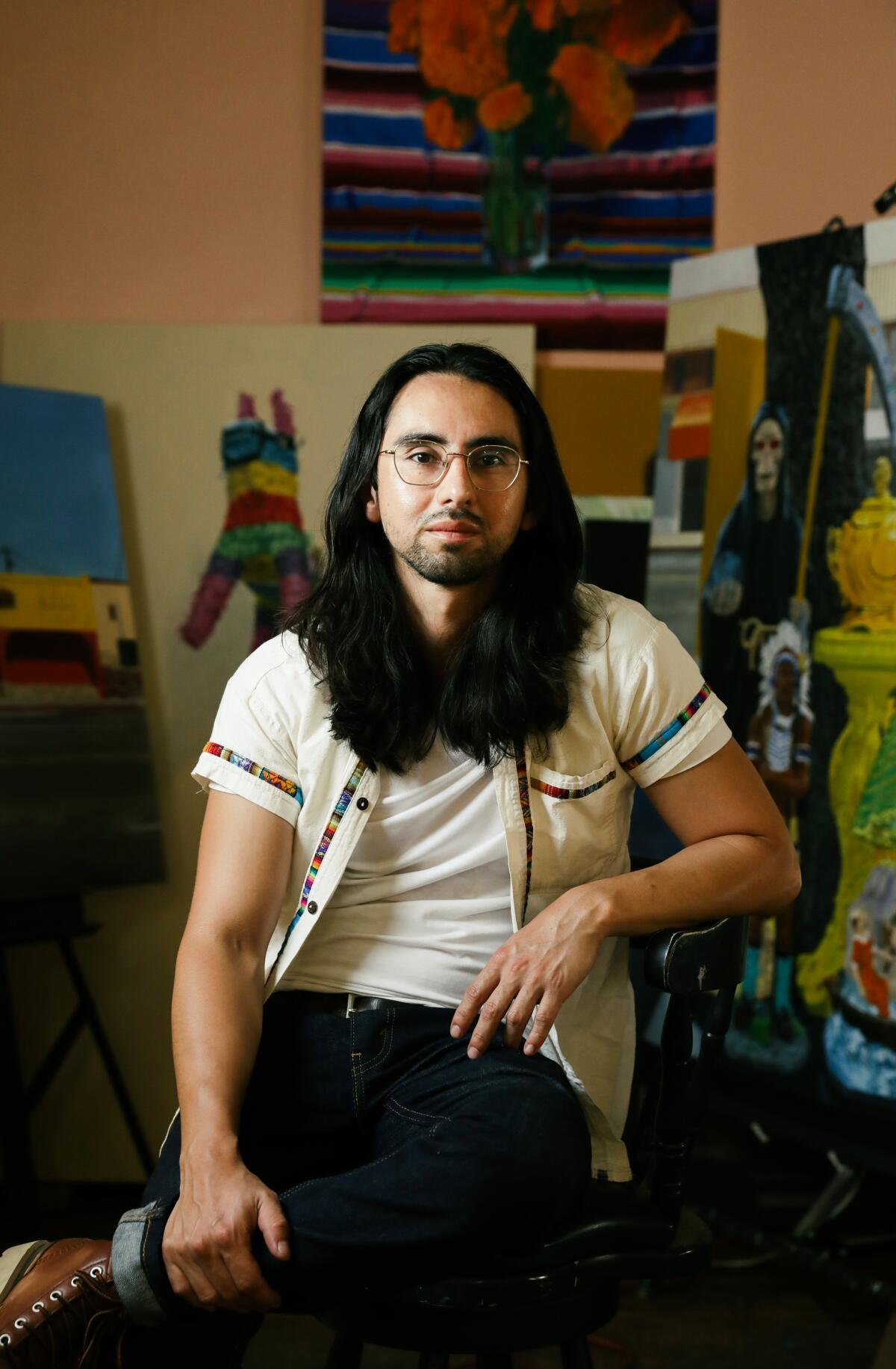
With his oil painting “Food Box,” Francisco Palomares pays tribute to the farmworkers who continued to work in the fields during the early months of the pandemic, even as much of society sheltered indoors. Surrounded by cardboard to give the appearance of a typical produce container, the canvas is crowded with squash, peppers, nopales and corn — vegetables commonly used in Mexican dishes. A cluster of painted marigolds lines the bottom of the box, serving as an ofrenda memorializing workers who lost their lives due to COVID.
Palomares also brings his interactive piece “Francisco’s Fresh Paintings” to the exhibition. The pushcart-turned-mobile studio is part art installation, part love letter to the roadside fruit vendors he grew up seeing in East L.A. In the summer of 2020, he started setting up the cart in various locales around the city, selling made-to-order oil paintings of fruit, vegetables and handheld treats like pan dulce.
“A fruit cart and the person behind it are automatically seen as ‘lower-than,’” he said. “But I flip that upside down. I’m setting myself up to not only represent myself as an artist, but to also represent the community that I come from. Any street vendor that’s out there with their cart is an entrepreneur. This is a reflection of that.”
'At the Table'
When: Fridays 3-7 p.m., Saturdays and Sundays, 1-5 p.m. Through Dec. 4.
Where: Armory Center for the Arts, 145 N. Raymond Ave., Pasadena
Info: (626) 792-5101; armoryarts.org
The biggest entertainment stories
Get our big stories about Hollywood, film, television, music, arts, culture and more right in your inbox as soon as they publish.
You may occasionally receive promotional content from the Los Angeles Times.